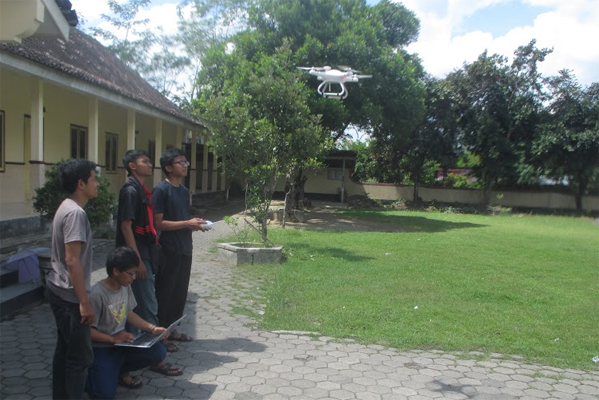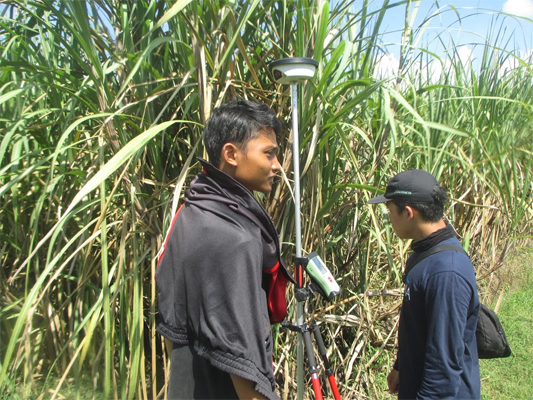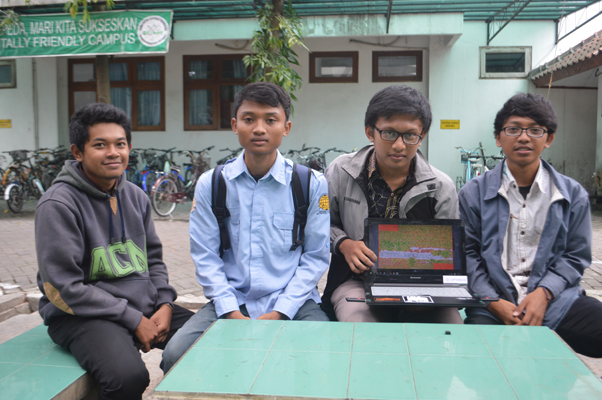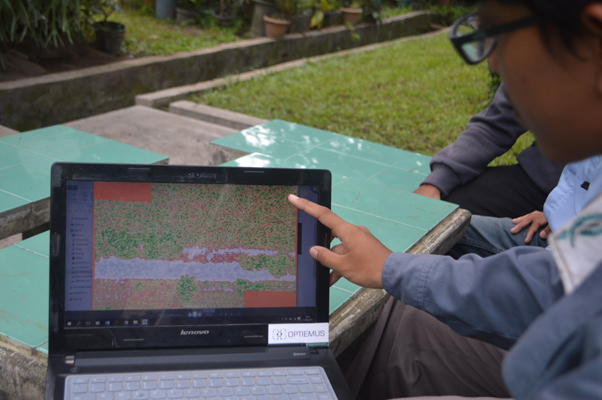Sugar canes are horticulture crops which are widely cultivated in Indonesia. In fact, this sugar-producing plant has become one of the leading commodity in some areas.
In Indonesia, the sugar is a strategic commodity in the economy. Unfortunately, the national sugar production has not been able to meet the needs of national sugar consumption. The data in 2015 recorded sugar production was in the range of 2.5 million tons, while the consumption rate reached 2.7 tons. The increase in demand was not matched by an increase in production due to decreasing production of sugar cane as a result of diseases.
Concerned about the condition, four students of the Faculty of Geography conducted a research to find solutions to this problems. They are Ridho Dwi Darmawan, Deha Agus Umarhadi, Muchsin Nur Wachid and Ahmad Faizan Bustomi.
They utilize technology of unmanned aircraft vehicle (UAV) to identify the health of sugar cane. The UAV is modified by the addition of an infrared camera.
Ridho, Chief of OPTIEMUS (Operasi Pesawat Tanpa Awak untuk Identifikasi Kesehatan Tanaman Tebu Semiotomatis),said beside covering larger areas, the use of UAV could identify the condition of the sugar canes as well.
“During this time, the identification of sugar cane is still done manually. The process was not easy due to its large area and densely spaced crops,” he said, Thursday (12/5), at the Faculty of Geography.
With the use of UAV, Ridho said, it can help boost efficiency in identifying the health of sugar cane. The UAV will be used to shoot by using an infrared camera that is sensitive to the presence of vegetation.
Furthermore, the photographs will be processed using the sugarcane crop transformation of vegetation index (NDVI). The data obtained is used to calculate the percentage of declining health plantation areas.
“Therefore, we could predict the productivity of an area and would have time to figure out the best way to overcome such problem,” added Deha.
Deha said that the auto-pilot mode of UAV can be used to map 3 hectares of sugar cane crops in a round of a fly that lasted for 7 minutes.
“With this method, we can identify the condition of the sugar cane crop. We hope by the presence of this technology, we can support the government’s efforts to achieve sugar self-sufficiency by 2019,” he concluded.





